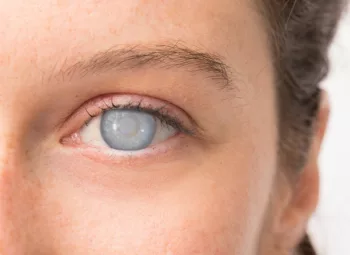
From time to time, patients whose cataracts have been corrected through surgerical treatment experience a decline in their eyesight weeks or even months after their vision correction surgery. In these rare cases, patients understandably come to the conclusion that their cataract has returned.
Which prompts the question, “Can you get a cataract twice?”
The condensed answer is, no. A cataract is essentially the clouding of the eye’s natural lens and surgery is the complete removal of this clouded lens, followed by its replacement with an IOL (intraocular lens).
So why the decline in visual acuity after Cataract Removal?
While it is true that the original cataract may not return due to the fact that the eye’s natural lens has been removed and replaced with an artificial one, what can happen is the development of what could be called a “secondary cataract” or an “after-cataract”.
To explain what is happening, it is important to have a better understanding of the anatomy of the eye. Our eye’s natural lens is actually enclosed within a clear membrane known as the “lens capsule”. The lens capsule is clear and remains clear after surgery. During surgery, a portion of the lens capsule is removed to allow your surgeon access to the cataract, remove it, and replace it with the new artificial lens (IOL). The lens capsule is what holds the new lens in place after surgery.
What can happen post-surgery is not the return of a cataract but actually the thickening of the back side of the lens capsule. A condition known as Posterior Capsule Opacification or PCO. The thickening of the lens capsule allows less light to pass through on its way to the retina at the back of the eye, causing the decrease in visual acuity.
Although the development of PCO is fairly rare, affecting less than 10% of surgery patients, there is a fast and reliable remedy called YAG Laser Capsulotomy. A YAG capsulotomy is a special laser procedure that creates a small hole in the center of the lens capsule membrane on the backside where the thickening has occurred. The removal of this tissue allows light to pass through, resulting in clear vision. It is both a safe and effective treatment that seldom needs repeating.
To Learn More, Consult Your Physician
The reality of cataract removal is that almost 95% of patients have their vision completely restored to their pre-cataract condition. Those whose vision fails to improve often have pre-existing eye conditions such as macular degeneration or retinopathy caused by age and other health-related issues.
To learn more about how cataract surgery works and what treatment options are available, please call or contact one of our locations online today and schedule your FREE consultation.





